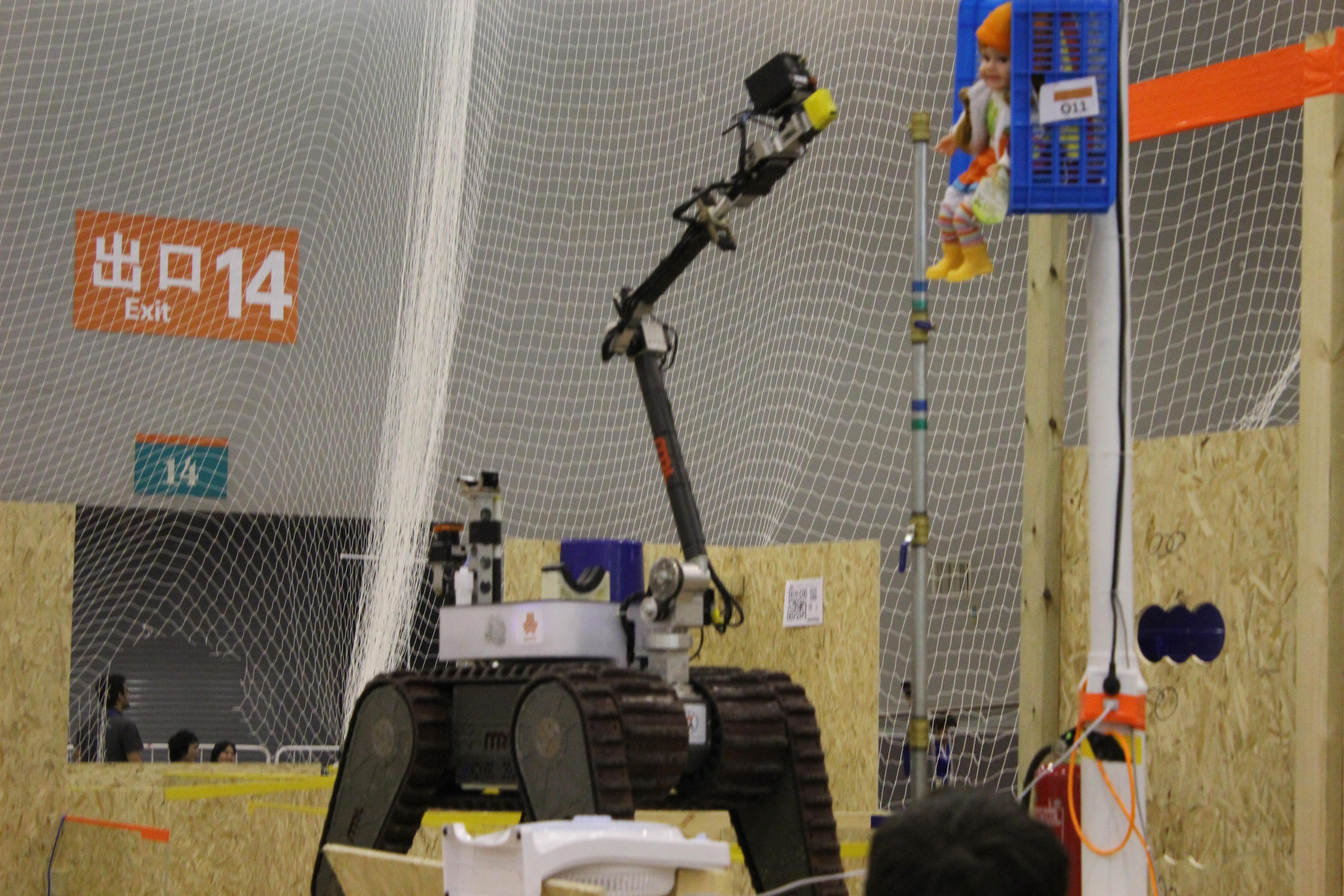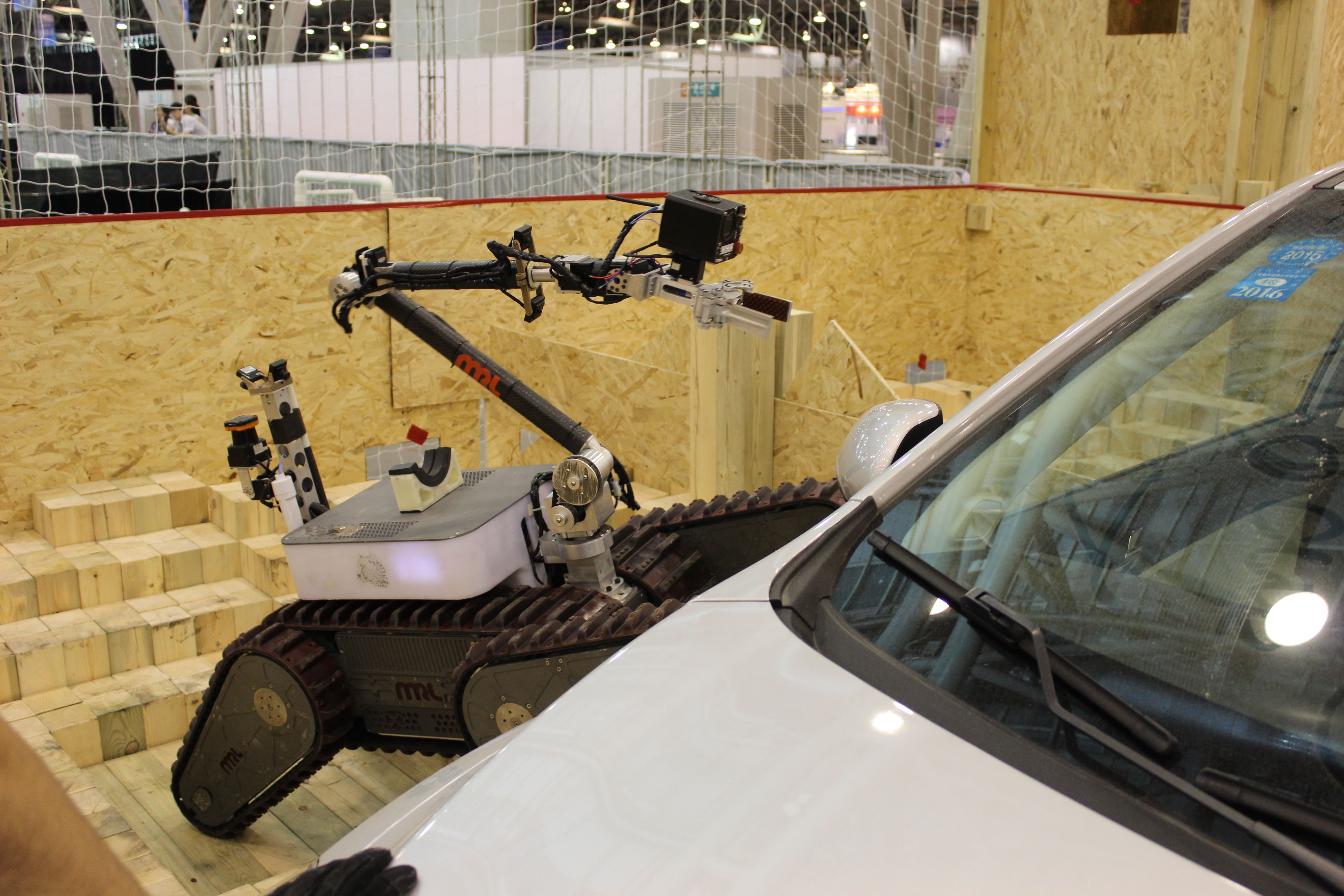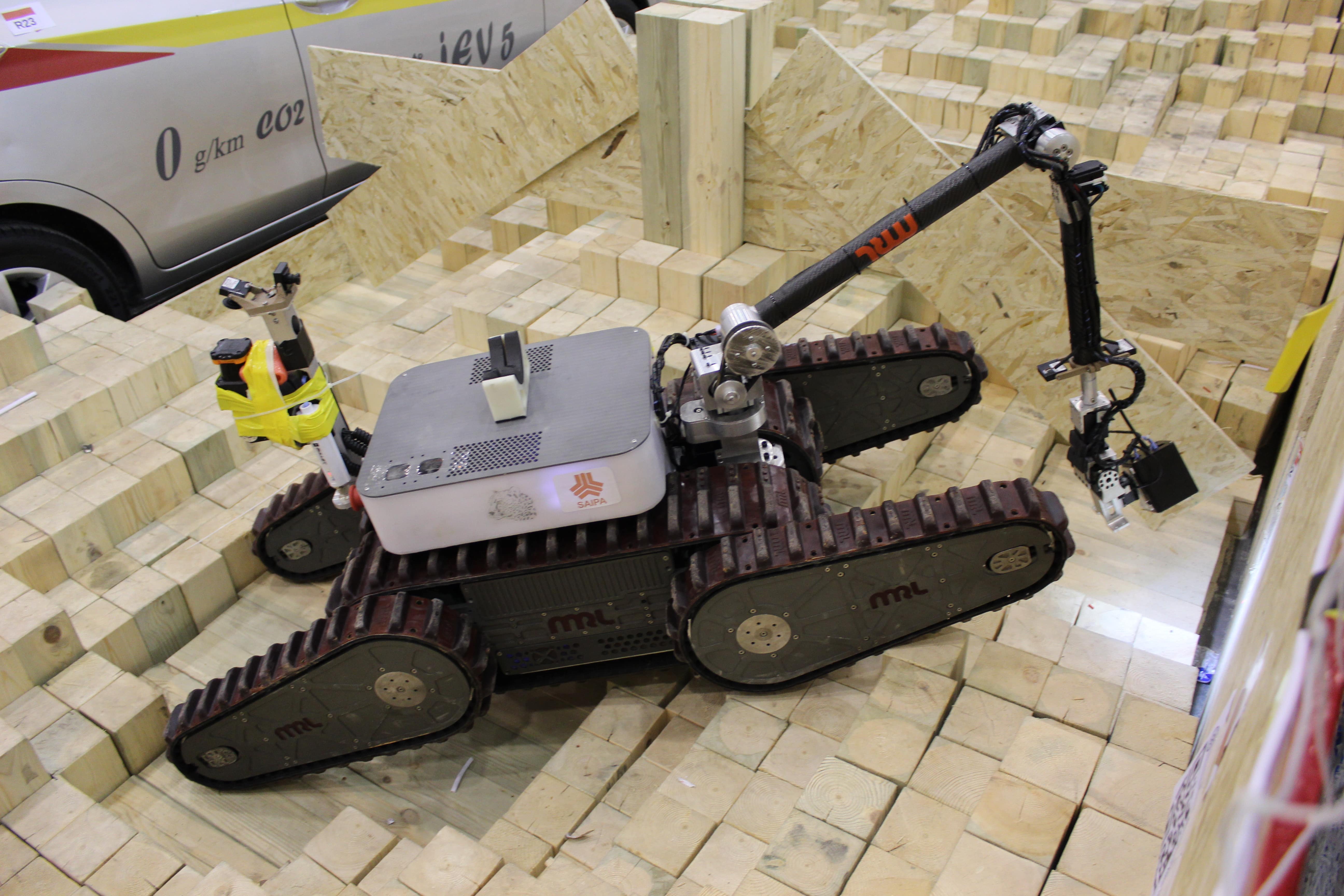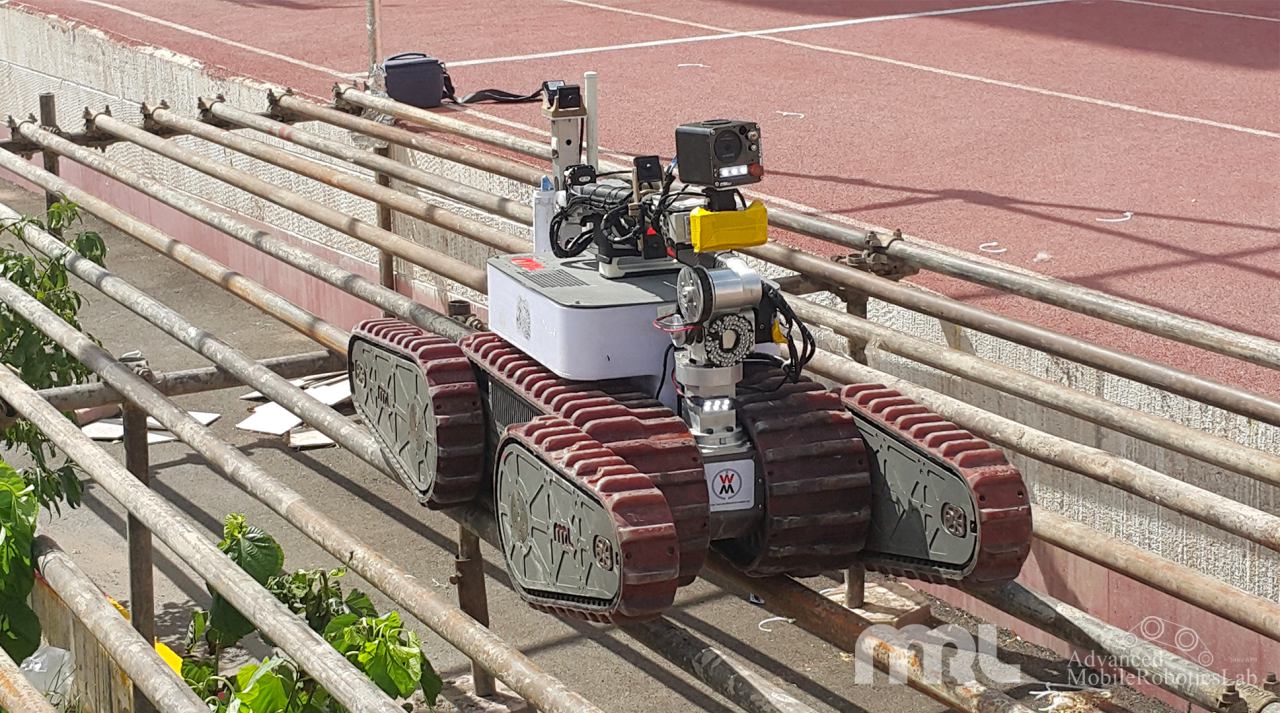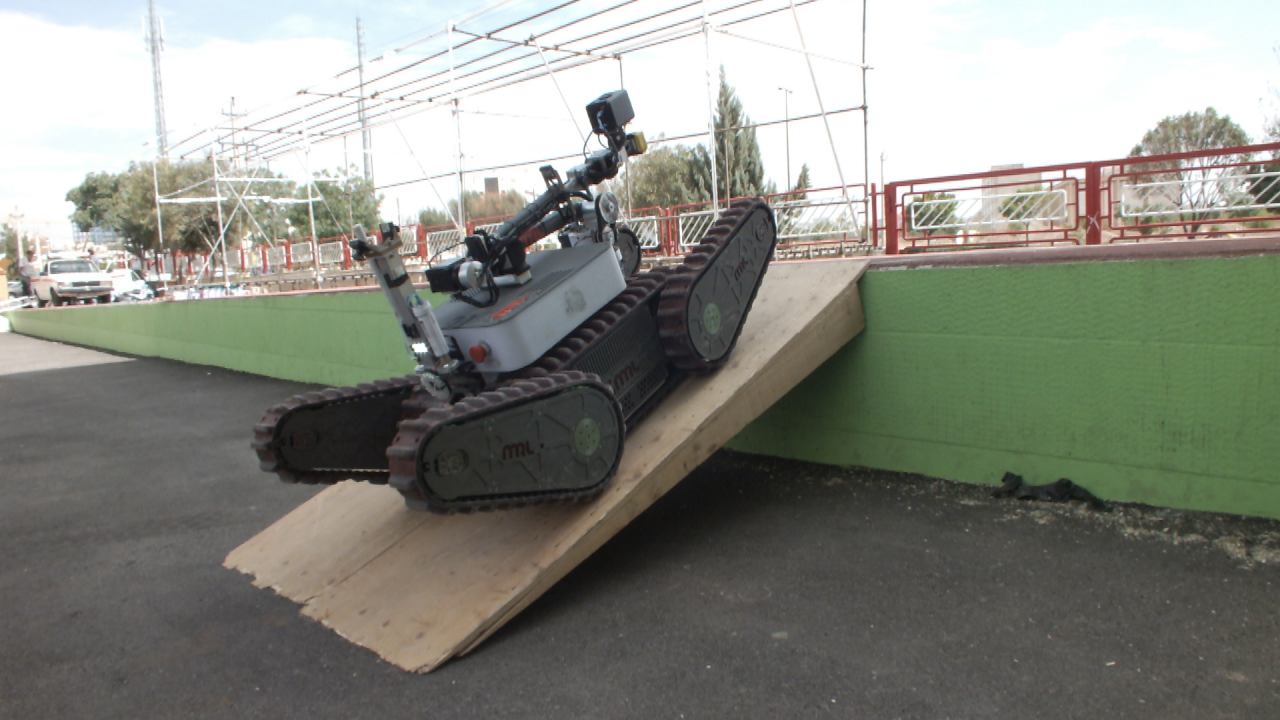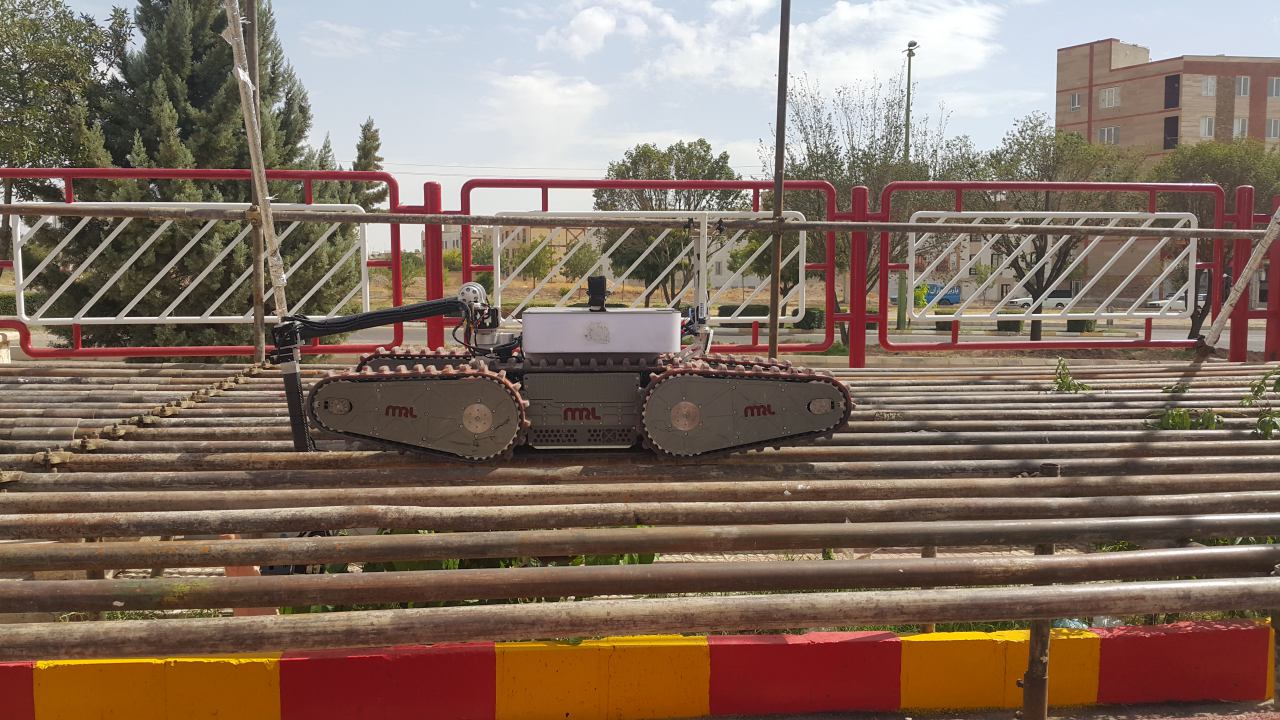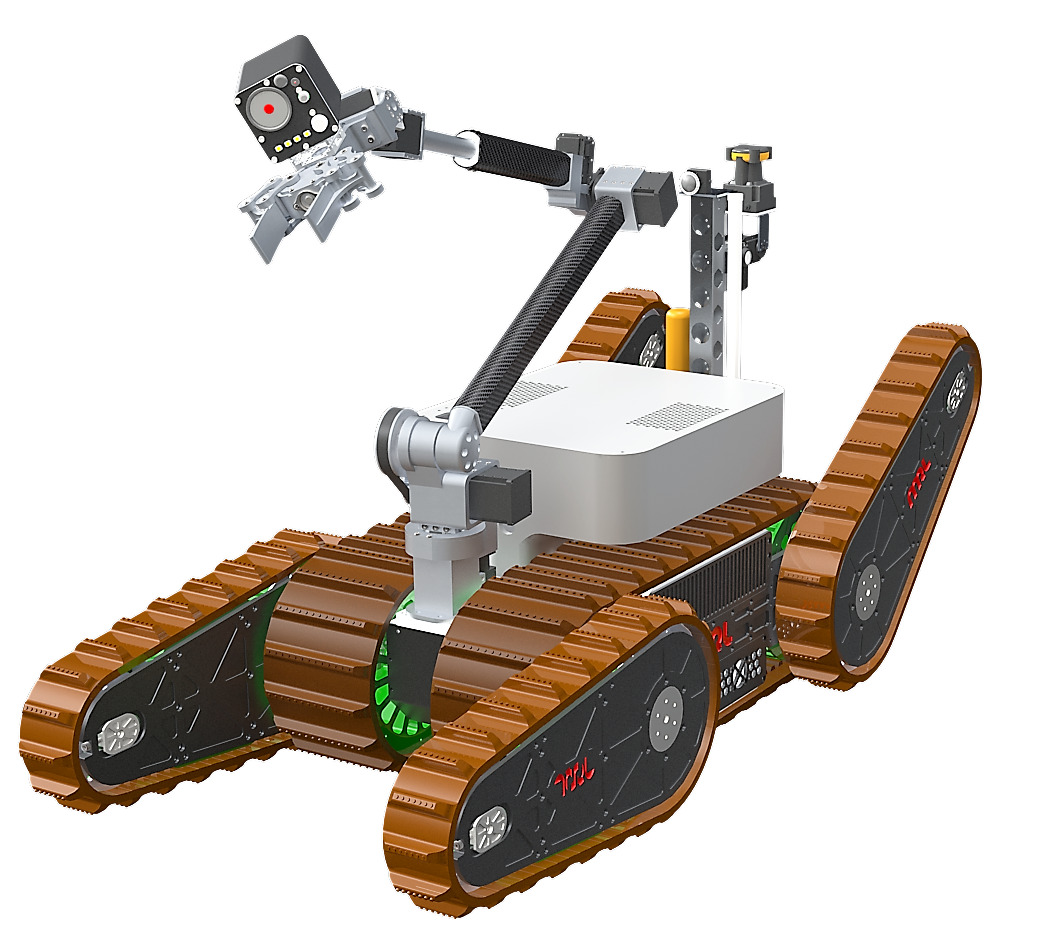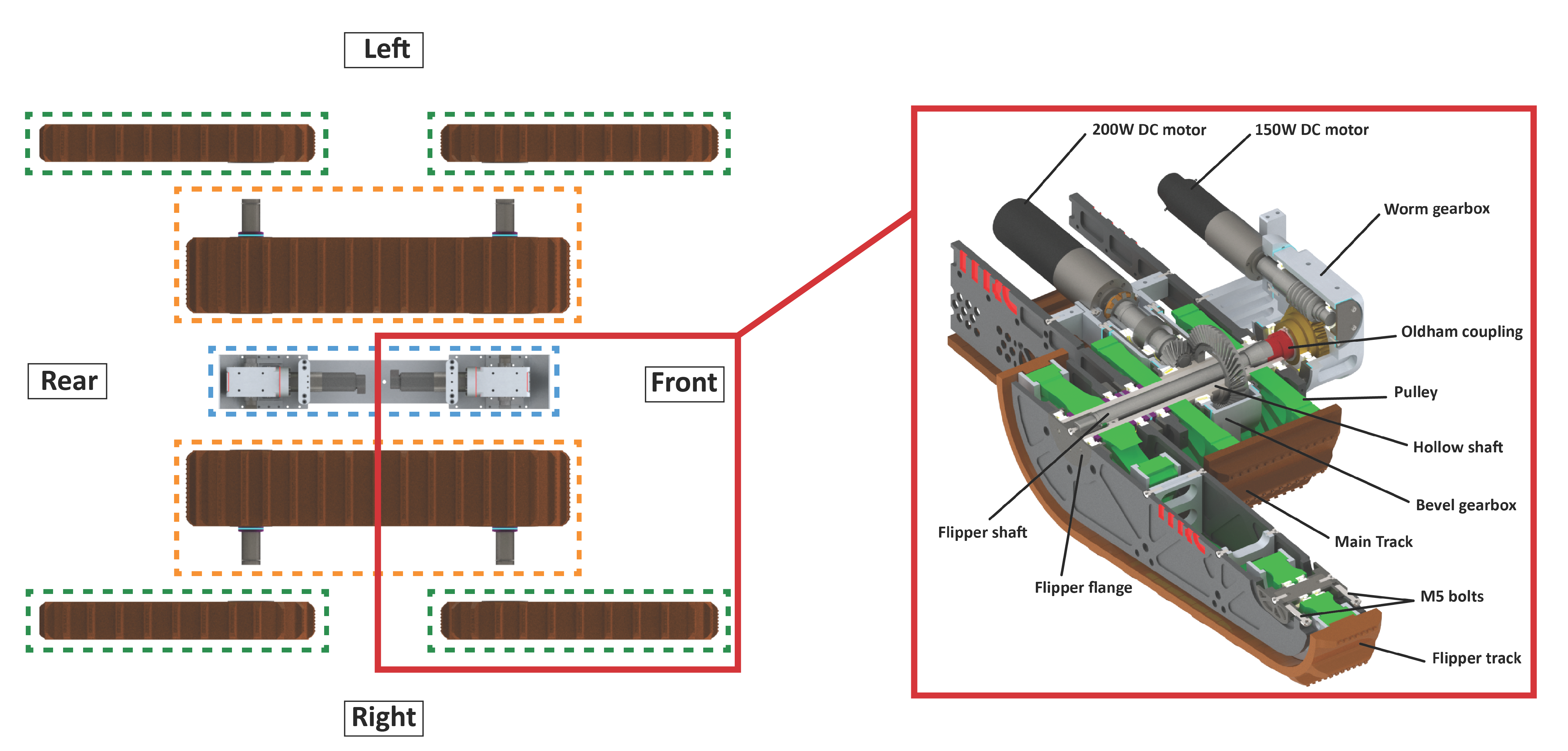Response Robot (2 versions)
Maxi-sized tracked response robot for hazardous environments
The common challenge with response robots is embedding all mobility, dexterity, and reconnaissance capabilities in a single robot. Our team at SYNTECH Technology and Innovation Center designed and implemented a tele-operative response robot —Karo Plus— that exhibits a high degree of mobility at the side of maintaining required dexterity and exploration capabilities for urban search and rescue (USAR) missions.
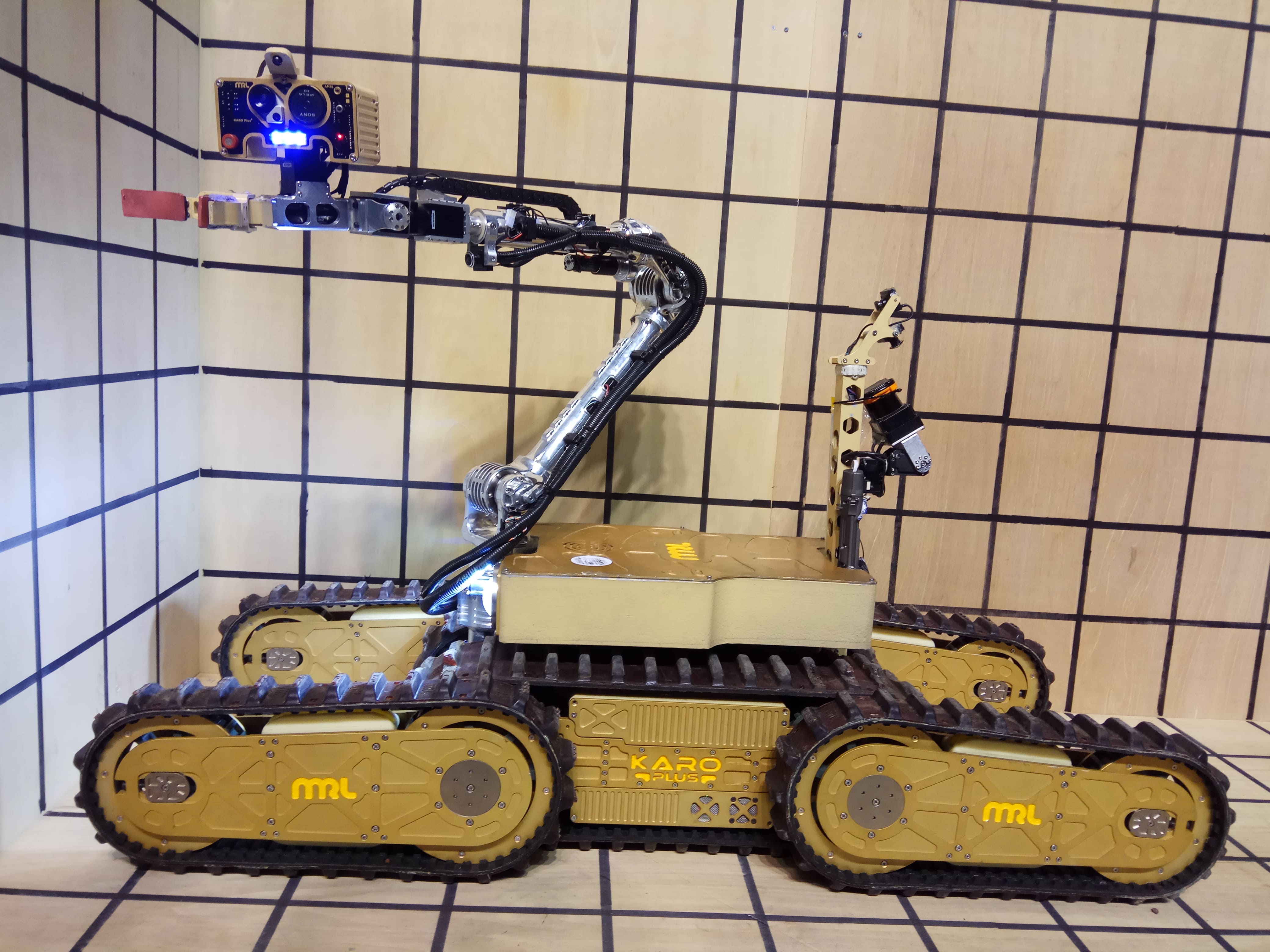
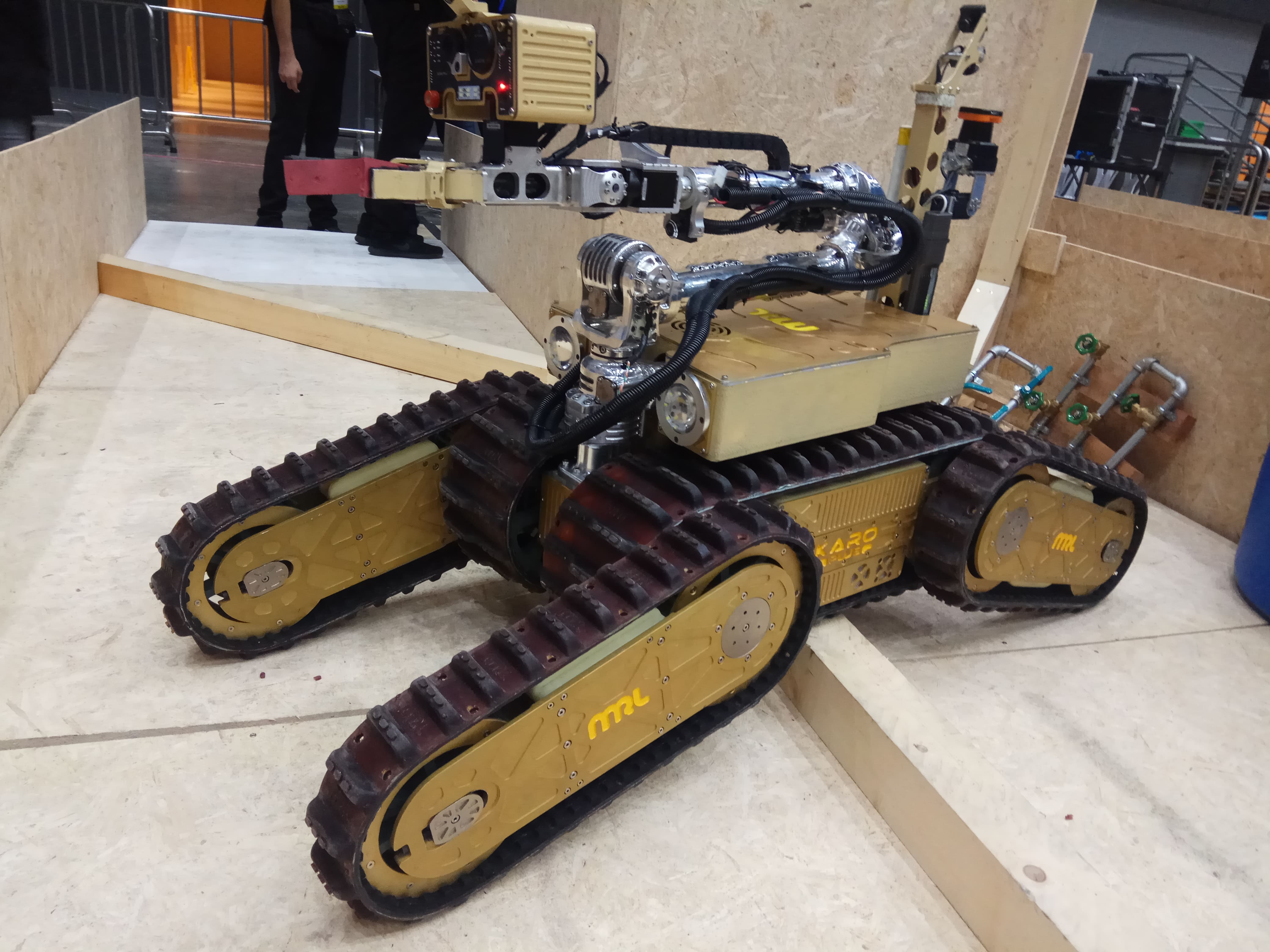
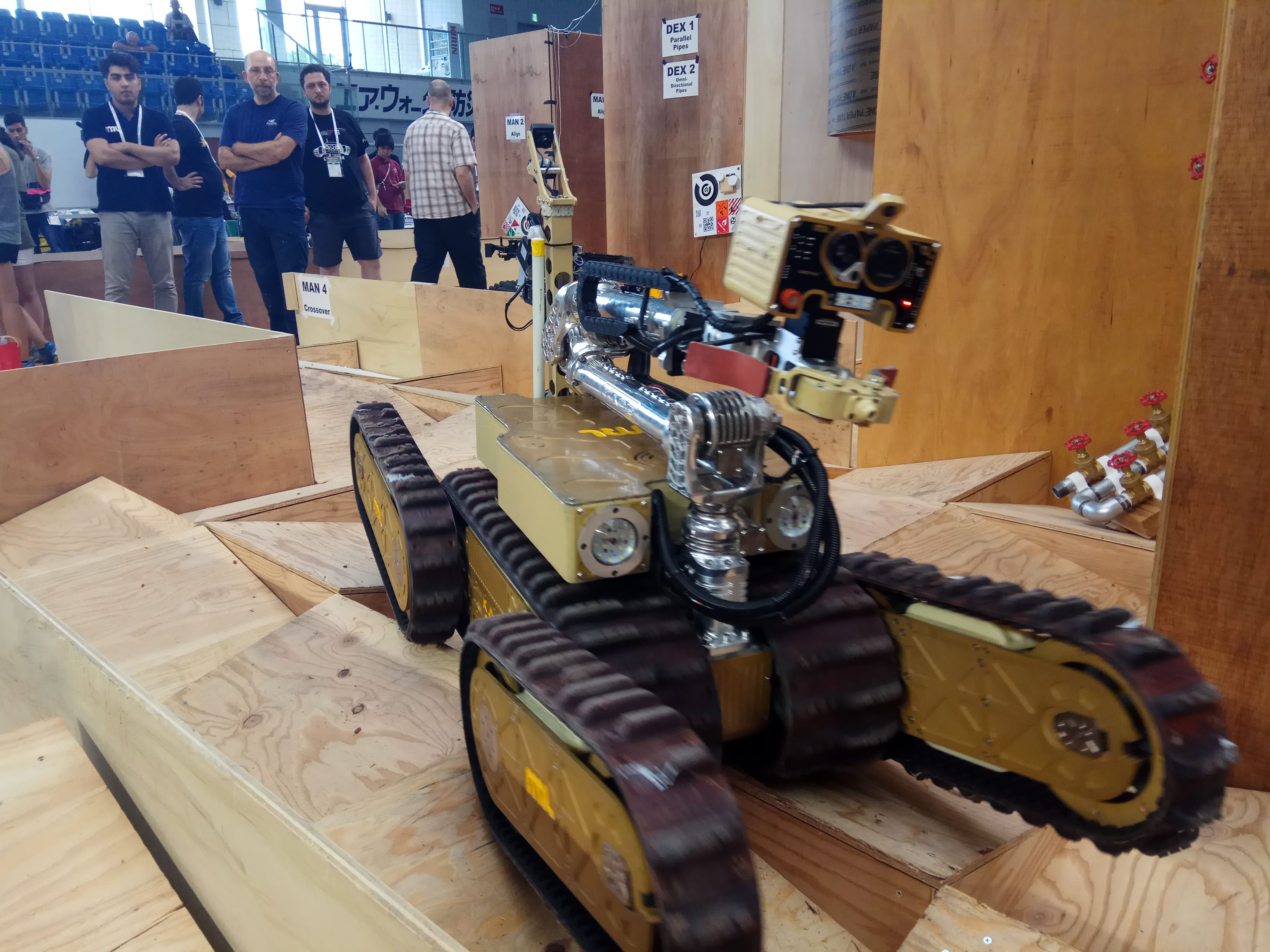
Karo Plus can be perceived as an unmanned ground vehicle (UGV) that has a dexterous robotic arm and is able to perform high mobility, manipulation, mapping, and inspection in areas that are inaccessible or too dangerous for people. We developed Karo based on the system requirements of a standard rescue robot from the frameworks of [Rescue Robot League] (https://rrl.robocup.org/) (RRL) of RoboCup competitions. Karo easily climbs and descends, stairs and slopes using the tracked locomotion system and performs reconnaissance, rescue and inspection tasks while maintaining stability on those obstacles.
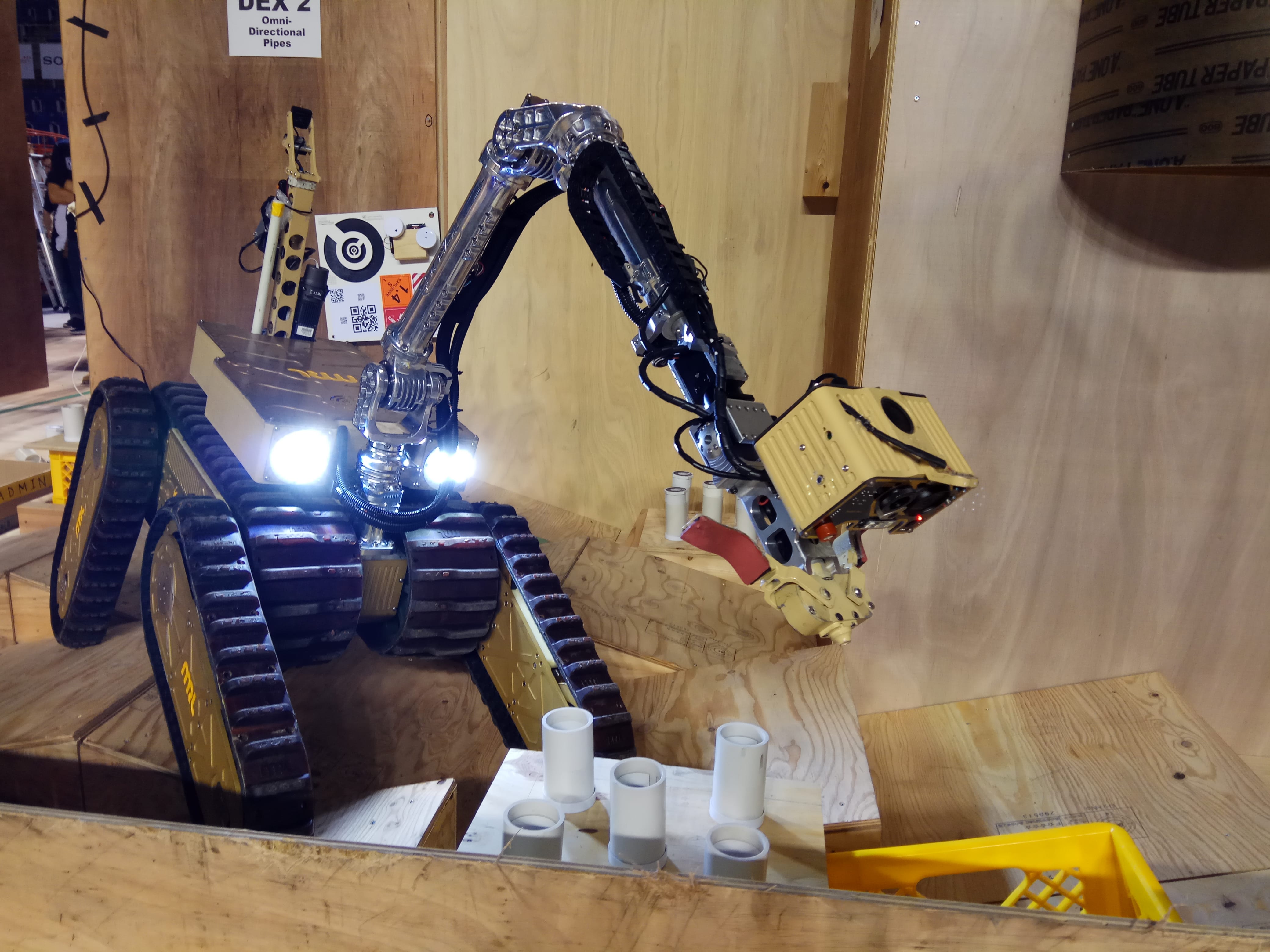
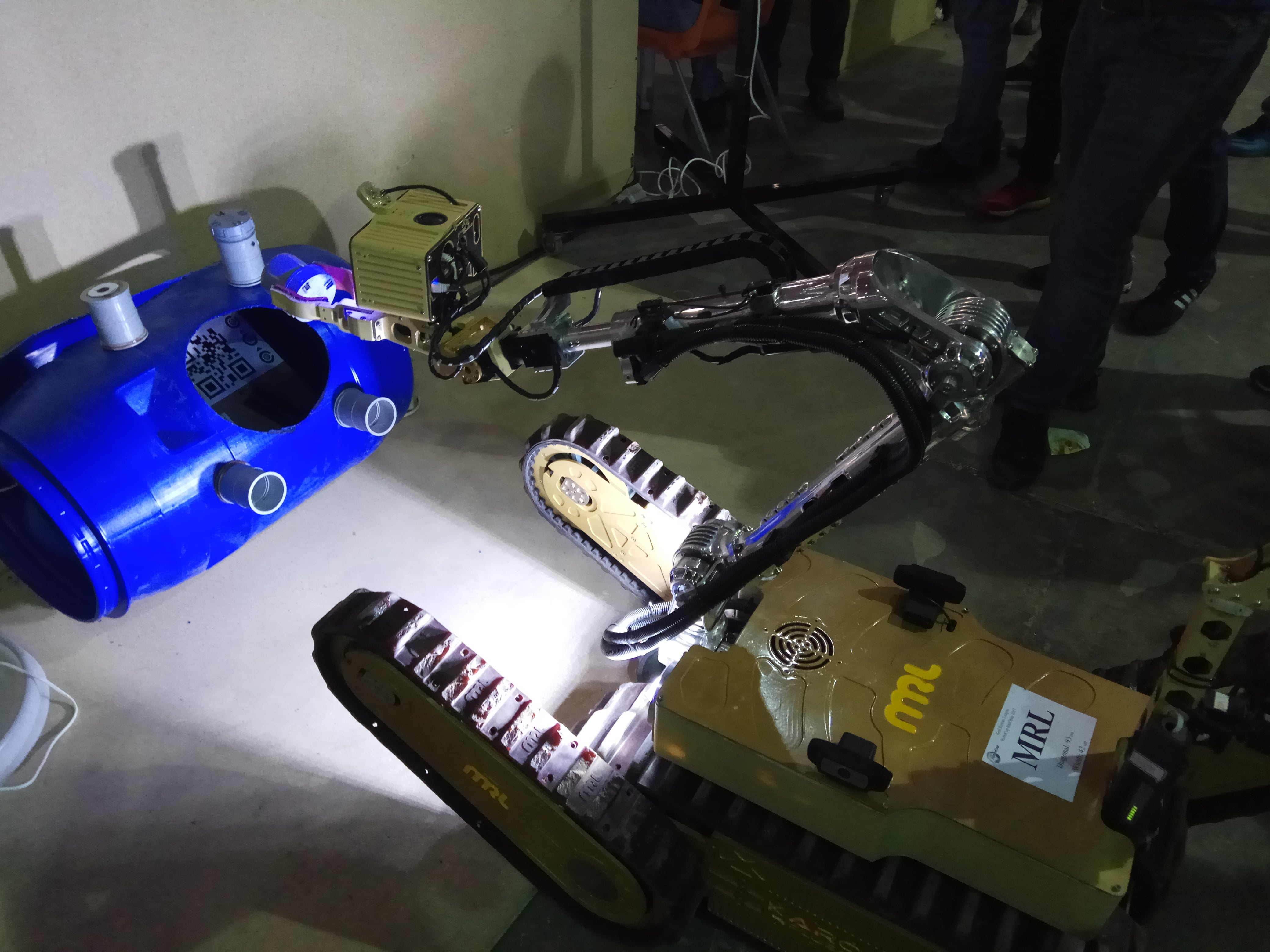
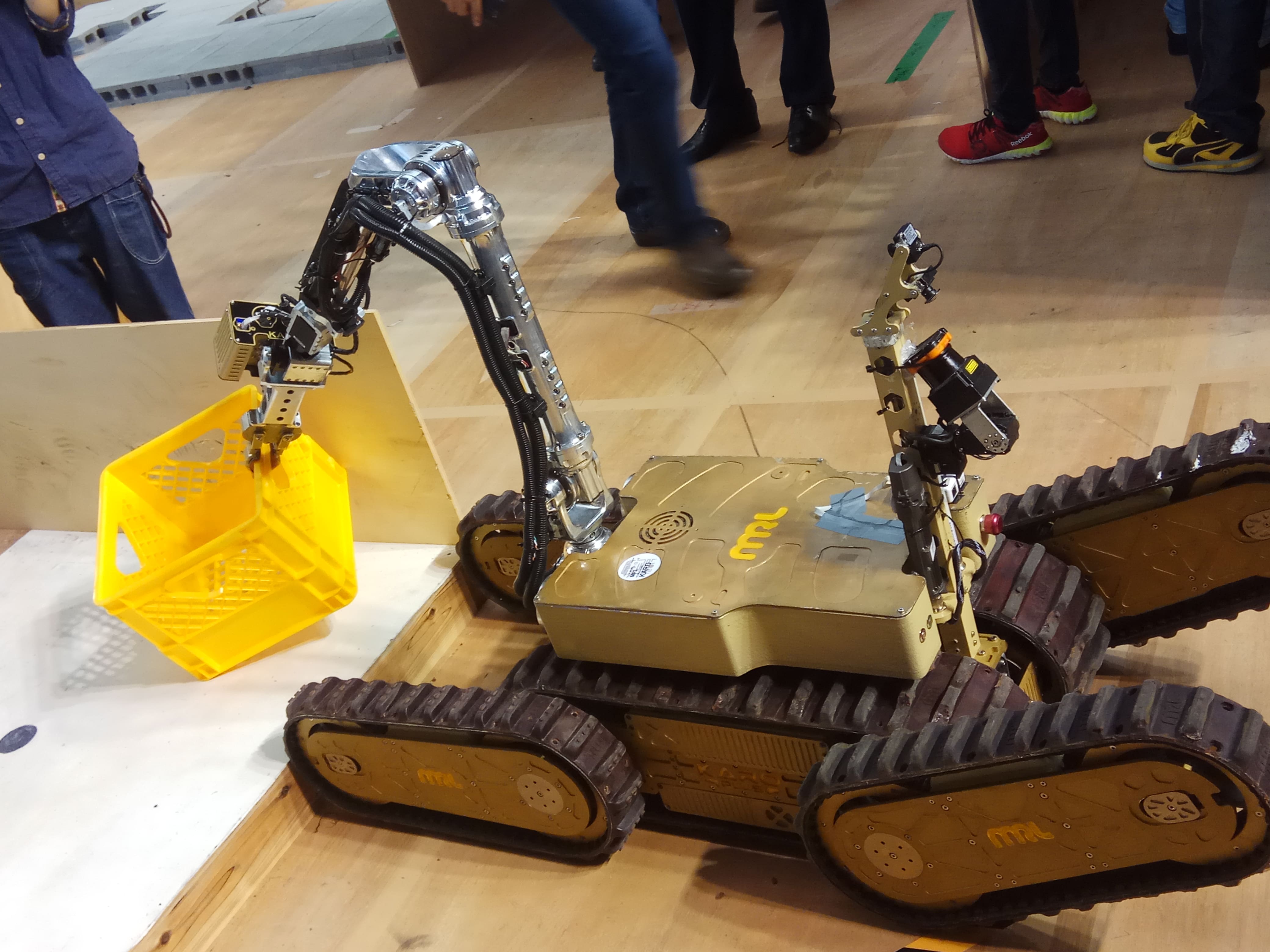
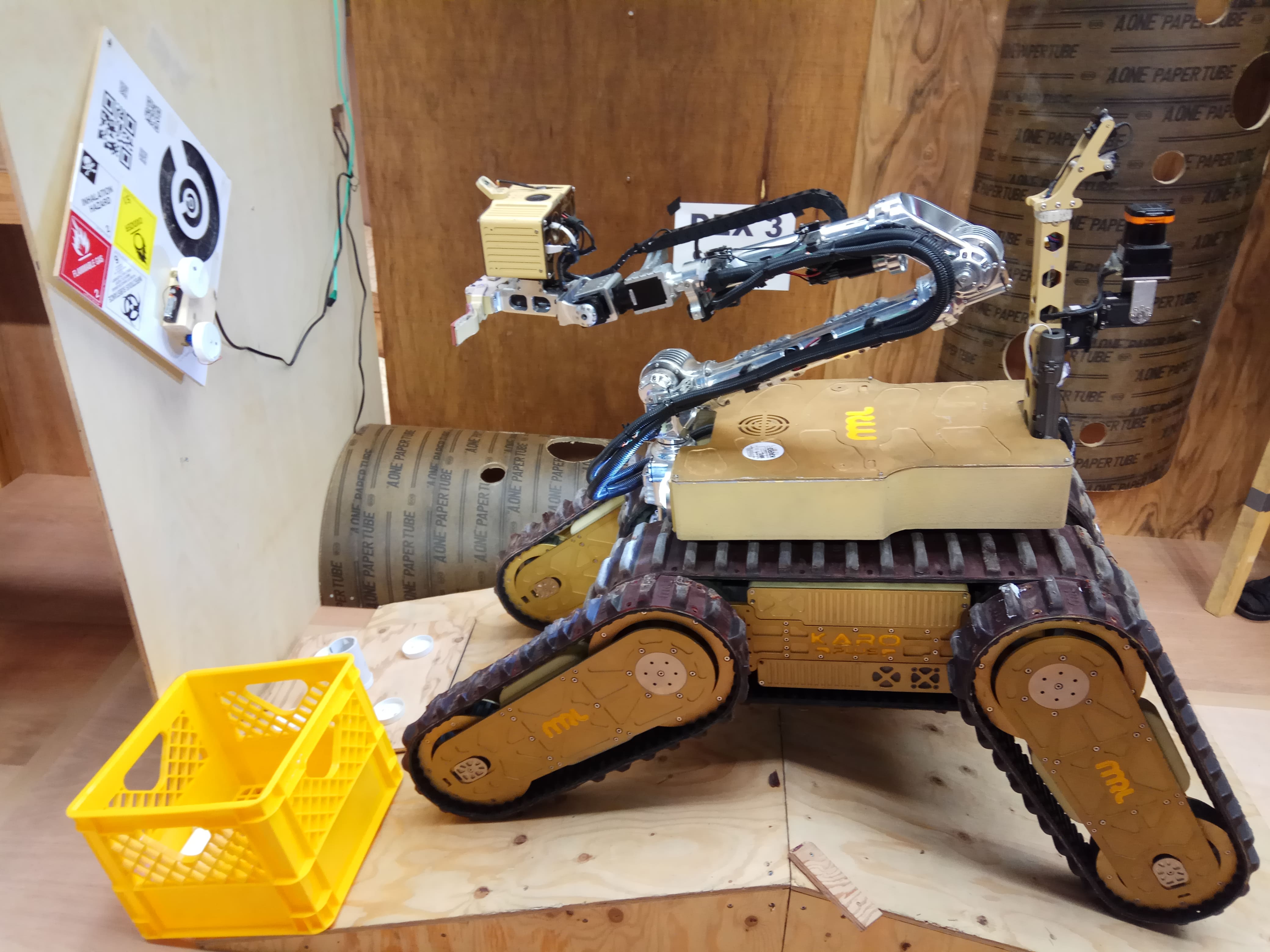
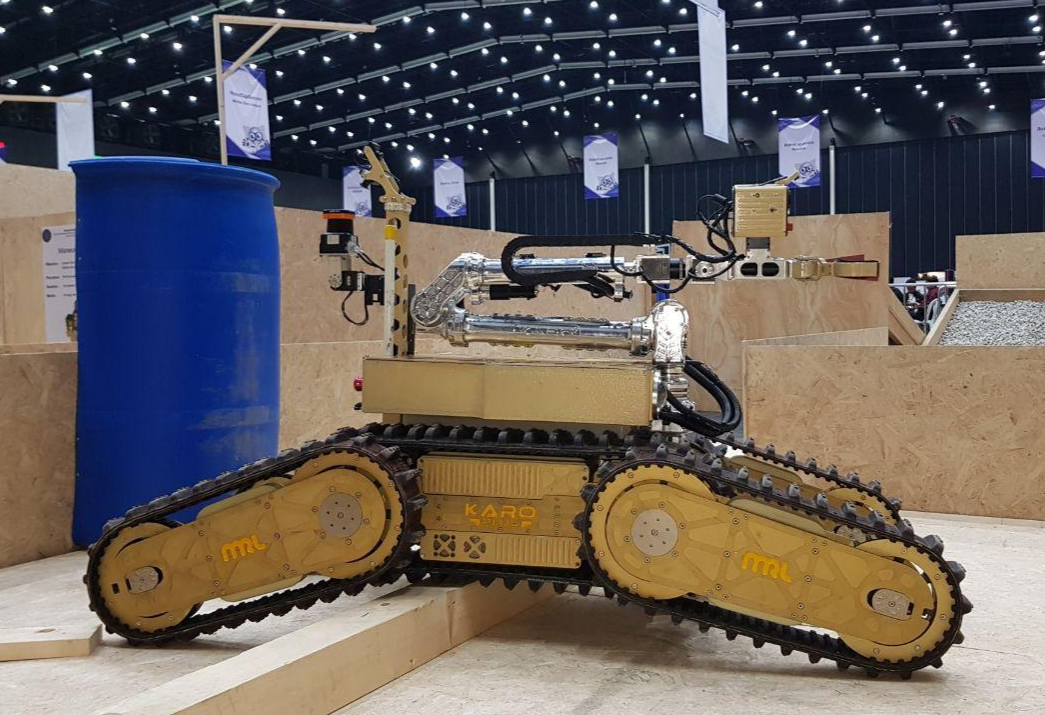
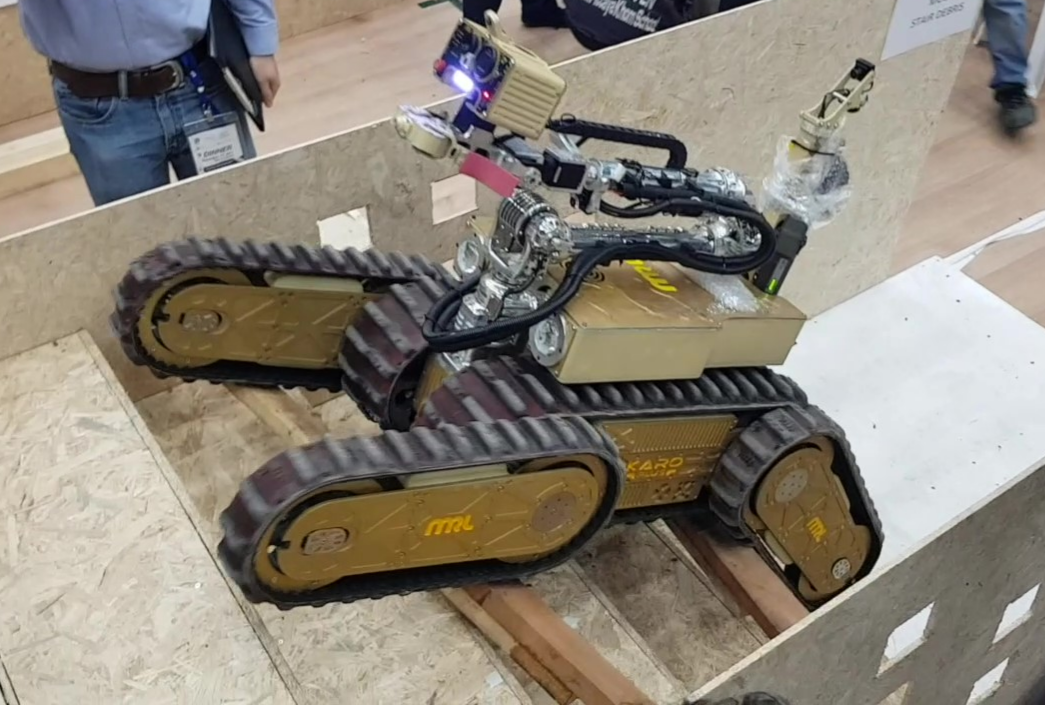
Our team completely implemented the command and control system with a customized power system, sensors, and hardware systems that fit the robot’s requirements. We equipped the robot’s inspection system with high-resolution cameras, night vision, infra-red vision, precise sensor systems, and a full-duplex audio interface. Karo Plus benefits from our unique software system and human–robot interface that enables the operator to remotely control the robot and have bi-directional communication with the environment.
We developed the first prototype of the robot in 2015. We undertook extensive evaluations of the robot’s field performance at RRL’s test suites and training suites of a fire department to make sure it meets the principal objective of a response robot. Here is Karo the previous version of Karo Plus:
